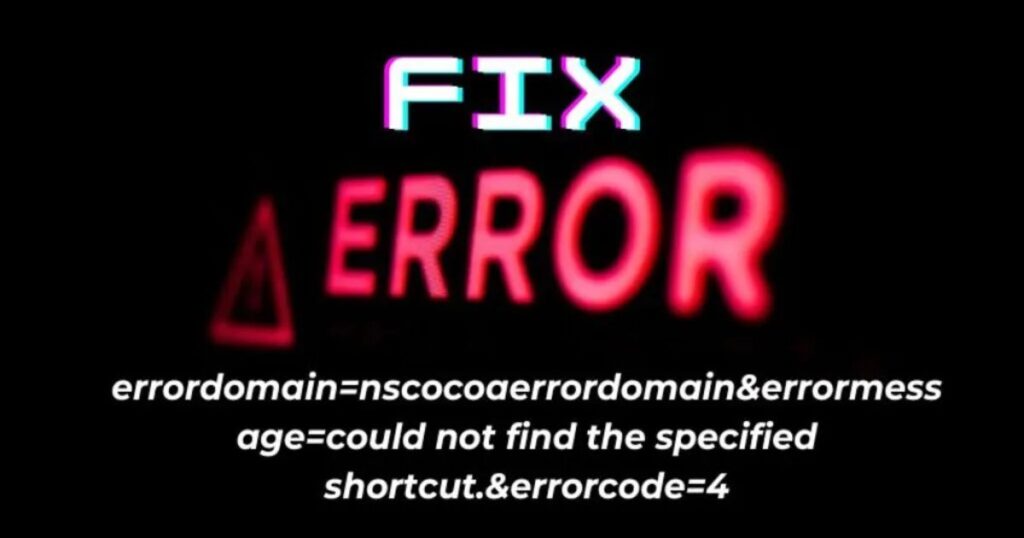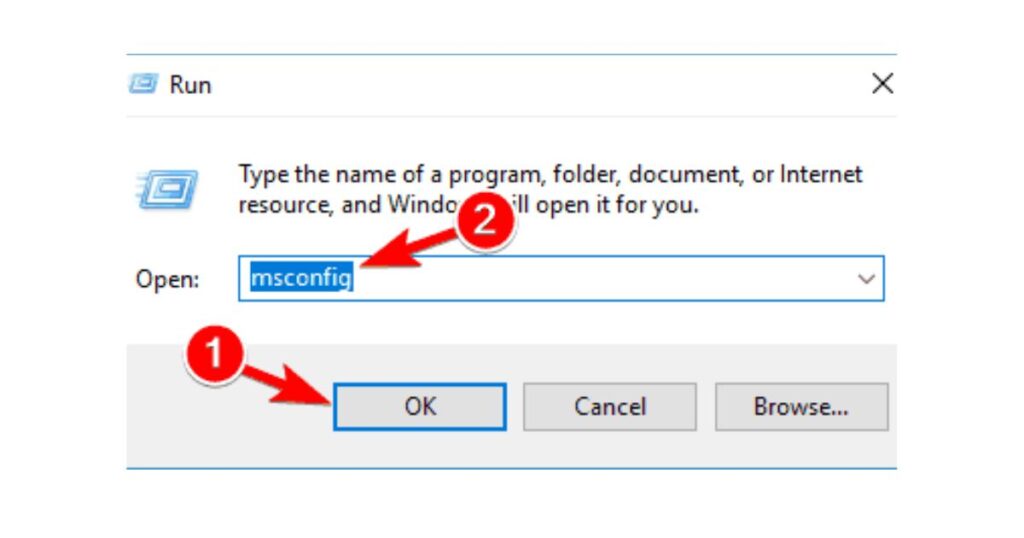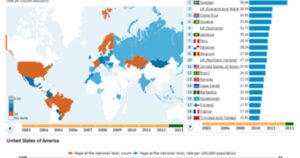Understanding and troubleshooting the error message errordomain=nscocoaerrordomain&errormessage=could not find the specified shortcut.&errorcode=4 is crucial for macOS users seeking to maintain a smooth and efficient operating environment.
This error often encountered when dealing with shortcuts, provides valuable insights into potential issues within the system. By delving into its components such as NSCocoaErrorDomain and ErrorCode 4 users can identify the root cause of the error and apply effective fixes, ensuring uninterrupted workflow and preventing data loss.
In this guide we will explore the intricacies of this error message, offering comprehensive strategies for diagnosis and resolution, ultimately empowering users to navigate macOS errors with confidence and ease.
Breaking Down the Error Message: errordomain=nscocoaerrordomain&errormessage=could not find the specified shortcut.&errorcode=4

Breaking down the error message errordomain=nscocoaerrordomain&errormessage=could not find the specified shortcut.&errorcode=4 unveils key insights into macOS error handling. The prefix errordomain=nscocoaerrordomain indicates that the error originates from Apple’s Cocoa framework, offering a starting point for diagnosis. This suggests an issue within Cocoa-based applications or functions, guiding users towards potential troubleshooting avenues.
The inclusion of errormessage=could not find the specified shortcut highlights a specific problem: the system’s inability to locate a designated shortcut. This could result from the shortcut being moved, deleted or pointing to an inaccessible file. Understanding this aspect directs users to focus on verifying shortcut paths and ensuring their accessibility within the system.
The significance of errorcode=4 lies in its indication of a no such file errormessage, providing further clarity on the issue’s nature. This error code signals that the system cannot find a required file or resource, prompting users to investigate potential file discrepancies or system level changes. By dissecting each component of the error message users gain a comprehensive understanding of the underlying problem enabling targeted troubleshooting for resolution.
You also like this post: Qiuzziz Unleashed: Revolutionizing Education Through Fun Quizzes
The Role of NSCocoaErrorDomain in macOS Errors.

NSCocoaErrorDomain plays a pivotal role in the error-handling infrastructure of macOS. As an error domain specific to Apple’s Cocoa framework it serves as a categorization mechanism for errors occurring within Cocoa based applications.
When an error is encountered within this domain it provides essential context about the nature and origin of the issue, aiding developers and users in troubleshooting. By identifying errormessage under NSCocoaErrorDomain users can narrow down potential causes and implement effective solutions, thereby enhancing system reliability and user experience.
In essence, NSCocoaErrorDomain facilitates structured errormessage handling within macOS contributing to a smoother operation of Cocoa based applications and the overall functioning of the system.
NSCocoaErrorDomain serves as a foundational element in macOS error reporting, providing developers and users with valuable insights into encountered issues. Errors categorized under NSCocoaErrorDomain are typically related to operations within Cocoa-based applications, offering a clear indication of where problems may arise.
By leveraging NSCocoaErrorDomain, users can efficiently diagnose and address errormessage, whether they stem from file operations, network communications or other Cocoa related tasks. This systematic approach to error handling enhances the overall stability and usability of macOS, ensuring that users can navigate their digital experiences with confidence and ease.
Ultimately, NSCocoaErrorDomain acts as a cornerstone in Apple’s commitment to delivering reliable and user-friendly computing environments to its customers.
Common Causes and Solutions for Could not find the specified shortcut error

The Could not find the specified shortcut errormessage in macOS can stem from various common causes, each requiring a tailored solution for resolution. One prevalent cause is the deletion or relocation of the target file associated with the shortcut.
In such cases, users should locate the original file and recreate the shortcut or update its path to reflect the new location. Additionally, corrupted shortcuts resulting from system errormessage or disk issues can trigger this errormessage. To address this, users should delete the corrupted shortcut and create a new one, ensuring its integrity and functionality.
By identifying these common causes and implementing the corresponding solutions users can effectively mitigate the Could not find the specified shortcut errormessage, thereby ensuring smooth and uninterrupted operations within macOS.
Understanding ErrorCode 4 and its Implications in macOS
In macOS, ErrorCode 4 typically refers to a file system error. When you encounter this errormessage it usually indicates that there’s an issue with reading or writing to the file system. Here is a breakdown of what this error might imply and its potential implications:
Disk Corruption: ErrorCode 4 could signal that there’s corruption or damage to the file system structure on your disk. This could be due to various reasons such as sudden power loss, hardware failure or software bugs.
Disk Space Issue: It could also mean that there is not enough space on your disk to perform the operation you are attempting. In this case freeing up disk space or expanding your storage might resolve the issue.
Permissions Problem: Sometimes, ErrorCode 4 can occur due to insufficient permissions to access or modify certain files or directories. Checking and adjusting file permissions might help.
Hardware Failure: If the error persists despite checking disk space and permissions, it is possible that there is a hardware issue with your disk drive. Running disk diagnostics or checking the disk for errors can help identify any hardware problems.
Software Conflict: Certain software applications or system updates can sometimes introduce conflicts that lead to file system errors. If you recently installed new software or updates before encountering ErrorCode 4 consider uninstalling or rolling back those changes to see if it resolves the issue.
File System Corruption: In more severe cases, the entire file system may be corrupted making it difficult to access any files or directories. In such situations you may need to use disk repair tools or even reformat the disk although this would result in data loss unless you have backups.
Backup: Regardless of the specific cause of ErrorCode 4, it is always a good idea to ensure you have backups of your important data. This way if the issue escalates and leads to data loss you can restore your files from backup without much trouble.
When encountering ErrorCode 4 or any file system error on macOS it is essential to diagnose and address the issue promptly to prevent further data loss or system instability. If you are unsure about how to proceed, seeking assistance from Apple Support or a qualified technician can be beneficial.
You also recommended this post: This Blog will show you about the new digital technology in Thailand

Frequently Asked Questions
Will I lose data if I encounter this error?
It depends on the specific circumstances. While data loss is possible, it is not guaranteed. Promptly addressing the error can help minimize the risk of data loss.
Are there any software updates or patches to address this error?
Check for macOS updates or patches from Apple as they may include fixes for file system related issues that could be causing this error.
What should I do if the error persists after troubleshooting?
If the error persists, consider reaching out to Apple Support or consulting with a professional technician for further assistance.
How can I prevent this error from occurring in the future?
Regularly maintaining your macOS system, keeping it up to date with software updates and practicing good file management habits can help prevent similar errors in the future.
Conclusion
encountering the error errordomain=nscocoaerrordomain&errormessage=could not find the specified shortcut.&errorcode=4 on macOS can be indicative of various underlying issues, including file system corruption, insufficient disk space or problems with shortcut references.
While troubleshooting steps such as repairing disk permissions, checking for available disk space and recreating the shortcut can often resolve the issue it is essential to approach the situation with caution.
Data loss is a potential risk but by promptly addressing the error and taking preventive measures users can minimize this risk and maintain the stability of their macOS system.
Moreover, staying proactive with system maintenance, keeping backups of important data and staying informed about software updates from Apple can contribute to a smoother and more reliable computing experience.











